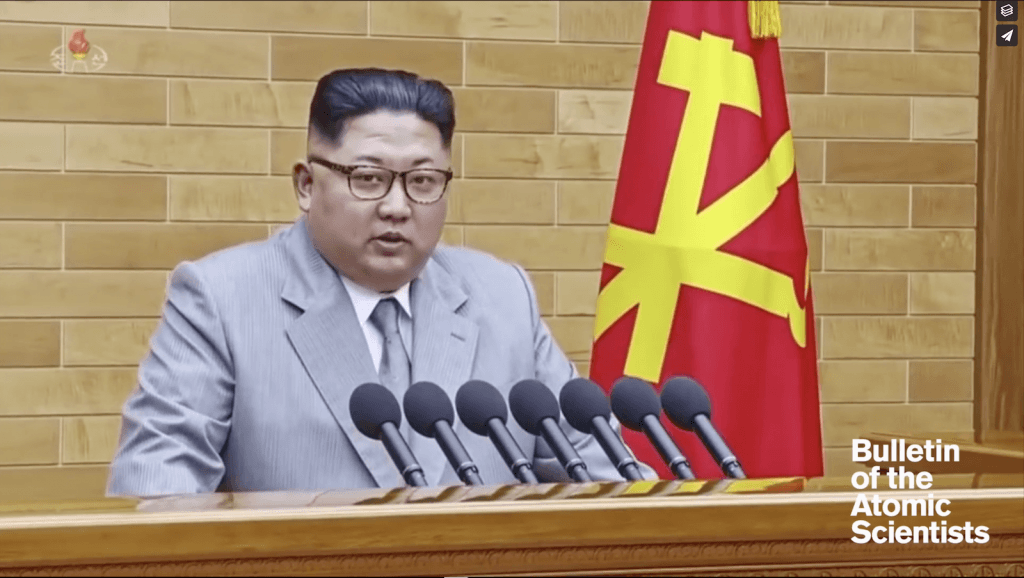One step back, two steps forward: Moving on from Hanoi
By Catherine Killough | March 5, 2019

I watched the second summit between President Donald Trump and Chairman Kim Jong-un with a mixed sense of wonder and dread. After years of advocating for both sides to abandon saber-rattling for diplomacy, it was a reparative experience merely to see positive interactions between North Koreans and Americans transpire in real time. Images of conflict and crisis receded, at least momentarily.
But in the wake of the Hanoi summit, media coverage has focused overwhelmingly on who is to blame instead of what needs to be done to move US-North Korea diplomacy forward. While it is important to examine what went wrong, a myopic focus on President Trump’s inability to strike a deal overlooks the larger picture: Both sides are still at the beginning of a fundamentally long-term process.
To be sure, the Hanoi summit was disappointing, and critics are right to hold the Trump administration accountable for walking away empty-handed. But the fact that both sides left on a positive note suggests that negotiations are not over, and in fact are just starting. Negotiators on both sides must now get diplomacy back on track.
What have we learned? President Trump and Chairman Kim failed to reach a compromise in their second high-stakes summit. It should come as no surprise to long-time North Korea watchers that sanctions were at the core of the dispute. Although reports from each side vary, it appears that North Korea demanded a sanctions relief package that the Trump administration considered disproportionate to the price of closing nuclear facilities at Yongbyon—“the heart of [North Korea’s] nuclear program,” in the words of Siegfried Hecker, the former director of the Los Alamos National Laboratory.
Hecker, who has visited Yongbyon multiple times, argues that disabling and dismantling Yongbyon would be “a big deal” as it would “stop the production of plutonium and tritium” and “greatly diminish the ability to make highly enriched uranium” in North Korea. But it remains to be seen what, exactly, was on the table. If there was an agreement in place, did Trump move the goalposts in an effort to “go all in”? Did Kim take a maximalist position, miscalculating that Trump was desperate for a deal? Did working-level negotiators hope another leader-to-leader meeting could resolve a thorny discrepancy?
These uncertainties are difficult to clarify, but they expose gaps in the negotiation process that can ultimately be bridged. First, the Trump team still needs to establish a coherent diplomatic process. Even as leader-driven diplomacy has gotten talks this far, consistent exchanges at the working level are critical to nailing down the specific asks on both sides. Let’s not forget that it was only two months ago that the US Special Representative for North Korea, Stephen Biegun, first met with his counterpart, Kim Hyok Chol.
Second, the Trump administration missed an opportunity to advance US-North Korea relations, a commitment both sides made a year ago. Efforts to diplomatically resolve the nuclear issue must be accompanied by actions to transform the relationship, as Biegun conveyed in the lead-up to Hanoi: “President Trump is ready to end this war… We are ready for a different future. It’s bigger than denuclearization.” But meaningful measures to achieve that vision, including the exchange of liaison offices and a declaration to end the nearly 70-year-old Korean War, were not enacted.
What’s at stake? The Trump administration’s failure to formalize a diplomatic process and take interim steps toward peace will come at the greatest expense of South Korea. President Moon Jae-in’s bold initiative to improve inter-Korean relations—which has already significantly reduced the risk of conflict on the Korean Peninsula—is limited without further progress in US-North Korea diplomacy. Practical measures to ease tensions have included the restoration of military lines of communication, the reunion of divided families, and the disarmament of the Joint Security Area, to name a few. The United States should facilitate such efforts, not only because they are in the interest of our South Korean ally, but also because advancing peace is integral to the denuclearization process.
If past experience has taught us anything, it is that US efforts to roll back North Korea’s nuclear program must simultaneously address the tensions that inform Pyongyang’s security calculations. As President Bill Clinton’s administration was first to demonstrate, normalizing bilateral relations offers the best chance to compel North Korea to abandon its nuclear aspirations. Clinton officials were able to negotiate the 1994 Agreed Framework—a comprehensive deal that froze North Korea’s plutonium activities for eight years and prevented the construction of two additional reactors—because North Korea saw it as a pathway to establishing political and economic relations with the United States.
But timing is everything. The security assurances provided by the Agreed Framework—and during subsequent opportunities in the Bush and Obama administrations—crumbled under leadership changeovers, bureaucratic inertia, and partisanship. Maintaining the current momentum is an urgent task, particularly as Trump may be increasingly distracted by the 2020 election and ongoing investigations. If current talks do not produce an agreement—even a limited one—before the year is over, the United States will have missed one of the best opportunities to advance longstanding goals for North Korea policy.
Where do we go from here? Although the empty outcome of the Hanoi summit strikes a familiar chord among longtime North Korea watchers, there are plenty of encouraging signs that continued diplomacy may eventually hit the right note. I am optimistic that talks can get back on track.
Importantly, both sides have indicated that diplomacy remains the preferred option going forward. Trump has not disparaged his meeting with Kim, and an upbeat Secretary of State Mike Pompeo has expressed hope in making further progress “in the weeks ahead.” With North Korea reciprocating those views, a return to “fire and fury” is not imminent. Kim’s commitment to continue to refrain from nuclear and missile testing, and the US-South Korean decision to continue to suspend large-scale military exercises, gives space for diplomacy to flourish.
Since Hanoi, Trump and Kim have inched closer to—not farther from—defining the parameters for an agreement that could meaningfully advance the denuclearization of North Korea and build lasting peace on the Korean Peninsula. Two steps forward and one step back is better than abandoning the path altogether.
Editor’s note: The author is a fellow at the Ploughshares Fund, which provides financial support to the Bulletin.
Together, we make the world safer.
The Bulletin elevates expert voices above the noise. But as an independent nonprofit organization, our operations depend on the support of readers like you. Help us continue to deliver quality journalism that holds leaders accountable. Your support of our work at any level is important. In return, we promise our coverage will be understandable, influential, vigilant, solution-oriented, and fair-minded. Together we can make a difference.
Keywords: Hanoi Summit
Topics: Nuclear Risk, Nuclear Weapons, Voices of Tomorrow














